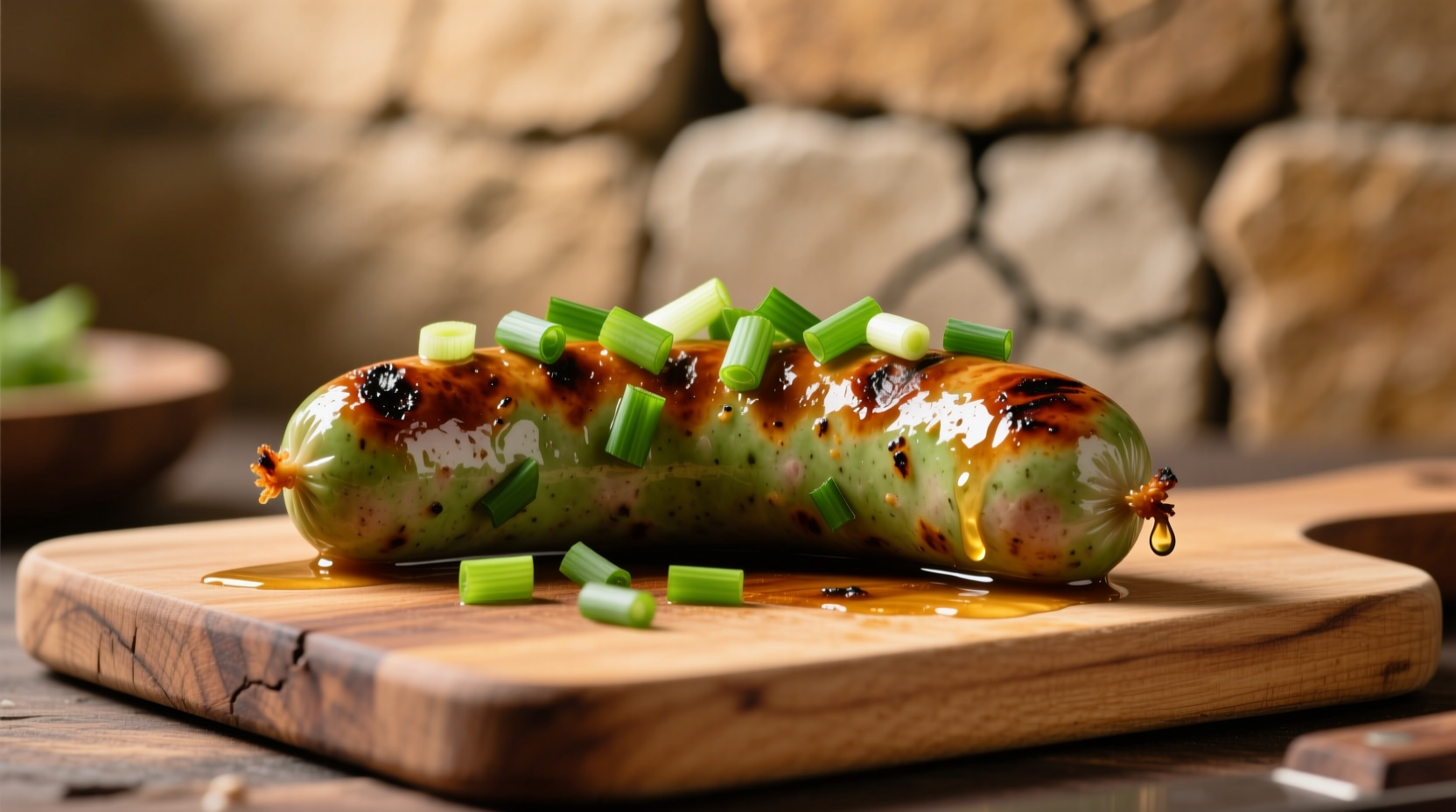What Makes Green Onion Sausage Unique
Unlike traditional Western sausages that rely heavily on garlic and black pepper, green onion sausage features scallions as its star ingredient, creating a distinctive fresh, slightly sweet flavor profile. The green onions aren't just mixed in—they're finely minced and evenly distributed throughout the meat mixture, ensuring every bite delivers that characteristic onion aroma without overwhelming sharpness.
Food historians trace green onion sausage back to southern China's Cantonese culinary traditions, where cooks began incorporating abundant local scallions into meat preparations during the Ming Dynasty. This innovation spread across Asia, adapting to regional preferences while maintaining its core identity as a fresh, aromatic sausage option.
| Characteristic | Green Onion Sausage | Traditional Pork Sausage |
|---|---|---|
| Primary Flavor Profile | Fresh, aromatic, mildly sweet | Rich, savory, sometimes spicy |
| Key Ingredient | Finely minced green onions (20-30%) | Garlic, black pepper, fennel |
| Texture | Softer, more moist | Firmer, denser |
| Common Culinary Uses | Stir-fries, dumplings, rice dishes | Breakfast plates, sandwiches, grilling |
When Green Onion Sausage Shines in Your Cooking
Understanding the appropriate culinary context prevents disappointing results. Green onion sausage excels in dishes where you want subtle onion flavor without raw onion's bite. It works beautifully in:
- Stir-fries - Adds protein while infusing the entire dish with onion aroma
- Dumpling fillings - Creates moist, flavorful pockets without excess liquid
- Fried rice - Browns beautifully while distributing onion flavor evenly
- Steamed dishes - Maintains moisture and imparts flavor without overpowering
However, avoid using green onion sausage in applications requiring strong meaty flavor or where its delicate onion notes would get lost, such as in hearty stews or tomato-based sauces. The USDA Food Safety and Inspection Service recommends cooking all sausages to an internal temperature of 160°F (71°C) for safety.
Choosing Quality Green Onion Sausage
When selecting green onion sausage, look for these quality indicators:
- Fresh green onions visible throughout (not just green coloring)
- Meat-to-fat ratio of approximately 70:30 for optimal moisture
- No artificial green coloring (indicated by unnaturally bright green)
- Minimal fillers or binders (check ingredient list)
Homemade versions typically outperform store-bought options in flavor complexity. The University of California Cooperative Extension's food science department notes that freshly prepared green onion sausage contains higher levels of volatile compounds responsible for its distinctive aroma compared to pre-packaged varieties.

Simple Preparation Techniques
Green onion sausage requires minimal preparation to shine. For best results:
- Remove casing if present (most Asian-style varieties come without)
- Cook over medium heat to render fat gradually
- Break into small pieces as it cooks for even browning
- Remove from heat just before fully cooked (it continues cooking off-heat)
Professional chefs recommend reserving the rendered fat for cooking vegetables—it carries the onion flavor beautifully. This technique transforms simple side dishes into complementary accompaniments. For dumpling fillings, partially cook the sausage first to remove excess moisture that could make wrappers soggy.
Flavor Pairing Guide
Green onion sausage plays well with ingredients that complement rather than compete with its delicate flavor:
- Soy-based sauces - Light soy enhances without overpowering
- Ginger - Adds warmth that complements the onion's freshness
- Rice wine - Brightens the overall flavor profile
- Shiitake mushrooms - Provides umami contrast
- Bean sprouts - Adds crunch that contrasts the sausage's tenderness
Avoid strong competing flavors like garlic (which duplicates the onion notes) or heavy spices that mask its subtlety. The Culinary Institute of America's flavor pairing research shows green onion sausage achieves optimal flavor balance when paired with ingredients containing complementary sulfur compounds found naturally in alliums.
Storage and Shelf Life
Proper storage maintains both safety and quality:
- Refrigerate unopened packages up to 5 days past sell-by date
- Once opened, use within 2 days
- Freeze for up to 3 months (portion before freezing for convenience)
- Thaw frozen sausage in refrigerator overnight
Notice quality degradation through changes in color (grayish tint), texture (slimy surface), or smell (sour or ammonia-like odor). The FDA's Food Code specifies that cooked sausage should be consumed within 3-4 days when properly refrigerated.











 浙公网安备
33010002000092号
浙公网安备
33010002000092号 浙B2-20120091-4
浙B2-20120091-4